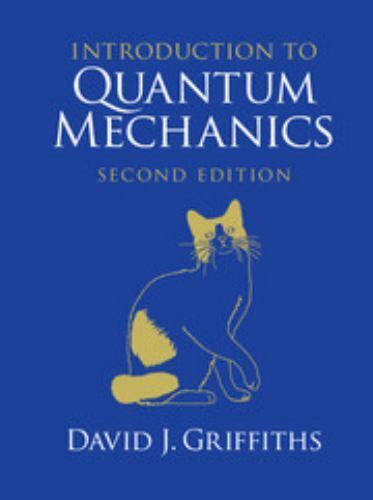

His record of successful theoretical research with undergraduate students was recognized in 2011 when he was named as a KITP-Anacapa scholar. Before joining the Reed College, Oregon, faculty in 2007, Schroeter taught at both Swarthmore College and Occidental College.

I dont have the 3rd Edition textbook but the 2nd Edition is widely available online, so I assume. (2002) from Stanford University where he was a National Science Foundation Graduate Research Fellow. Solutions to problems found in Griffithss Introduction to Quantum Mechanics (2nd Edition).

Schroeter is a condensed matter theorist. He is the author of over fifty articles and four books: Introduction to Electrodynamics (4th edition, Cambridge, 2013), Introduction to Elementary Particles (2nd edition, 2008), Introduction to Quantum Mechanics (2nd edition, Cambridge, 2016), and Revolutions in Twentieth-Century Physics (Cambridge, 2012). was in elementary particle theory, his recent research is in electrodynamics and quantum mechanics. He has spent sabbaticals at SLAC, Lawrence Berkeley Laboratory, and University of California, Berkeley. In 1997 he was awarded the Millikan Medal by the American Association of Physics Teachers. Griffiths is a Consulting Editor of The American Journal of Physics, and a Fellow of the American Physical Society. In 2001-02 he was visiting Professor of Physics at the Five Colleges (University of Massachusetts, Amherst, Mount Holyoke, Smith, and Hampshire), and in the spring of 2007 he taught Electrodynamics at Stanford. He taught at Hampshire College, Mount Holyoke College, and Trinity College before joining the faculty at Reed College in 1978. The second chapter-especially when you include all the exercises at the end of the chapter-is an essential reference for one-dimensional quantum mechanics, a topic that's growing in relevance with increasing experimental capacity to engineer effectively one-dimensional systems such as solid state quantum wires or tight optical waveguides for ultracold atoms.David J. I've taught the second edition several times and found that the impedance matching between the content and previous student knowledge allows clear signal transmission. I would argue that if you want to teach a waves-first course, there is no better starting place than the first two chapters of the book, lightly revised and improved from the previous edition. The Griffiths and Schroeter (G&S) text falls squarely in the waves-first camp.

Roughly speaking, there are two main approaches to teaching undergraduate quantum mechanics: waves-first or spins-first (other approaches include historical (an especially good fit for sophomore-level modern physics classes) and formalism-first (perhaps better for graduate quantum courses)).


 0 kommentar(er)
0 kommentar(er)
